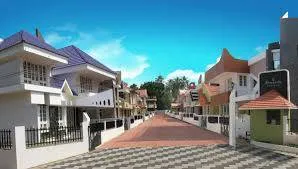

With the government approving the Kerala State Finance Commission's recommendation to increase the stamp paper charge of real estate transfer by two per cent, the prices of land and building in the state are set to rise again from April 1 next year. At present, the document cost is 10%, including 8% stamp duty and 2% registration fee.
Adding to this is the writing fee and the "miscellaneous" cost of the registration office. Thus even the last penny left with the buyer for the land or building will drain off. Thus it is unfortunate that he will have to pay more than two per cent of the price of the property from now on.
Kerala has the highest document cost in the country. Years ago, the Center proposed a unified registration fee of five per cent at the all-India level.
It did not happen because of the fact the revenue would go down. Many states have reduced the registration fee on their own in several stages. Kerala has always shied away from this. Land price here is more than that in any other state. Even in rural areas, one cent of land has to be paid lakhs. The government levies stamp duty after fixing the fair price.
The government's new tax proposal will be a heavy burden on all those involved in real estate business, which has been hit by pandemic-induced economic slowdown.
The recommendation of the State Finance Commission was to levy an additional fee of one per cent on the sale of land valued at Rs 25000. The proposal was to transfer the proceeds to the district panchayats. But the government's decision to levy an additional tax of 2% on the price of all land sales above Rs 1 lakh per cent might have come out of the awareness that nowhere in the state there is one cent of land available for Rs 25 thousand.
Now, those who want to buy four or five cents of land to build a house in an urban area will have to spend additional amounts in lakhs.
lakhs more. The situation for those who buy a house or flat will be worse than this. A flat worth Rs 50 lakh is expected to fetch more than Rs 1 lakh from April 1. The higher the price, the higher will be the fee.
The Finance Commission has recommended that an additional property fee of two per cent be paid to the District Panchayats. Such a proposal may be based on the presumption that it will help the District Panchayats to undertake more development and welfare activities. However, it should be noted that in the present scenario, the lack of funds would not at all affect the local bodies.
How many panchayats in the state are there which will have fully utilized the share allotted for over many years? Out of the Rs 864 crore allotted to the district panchayats for the current year, about Rs 400 crore is yet to be utilised. The situation in all the local bodies is more or less the same.
The problem is not the lack of funding but the inability to spend it. Had the local bodies properly studied the fund distribution mechanism, the government would not have resorted to squeezing money out of people just to distribute it among district panchayats. With the Assembly election round the corner, the government should have understood the immorality behind such an anti-people tax collection, even before somebody pointed it out.